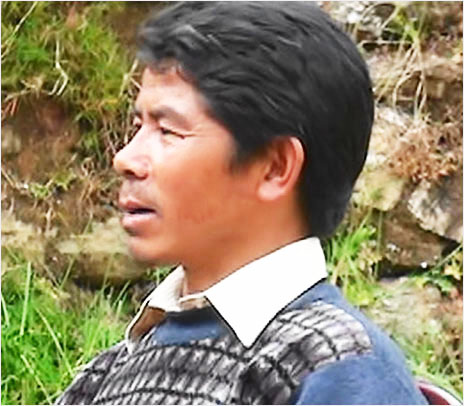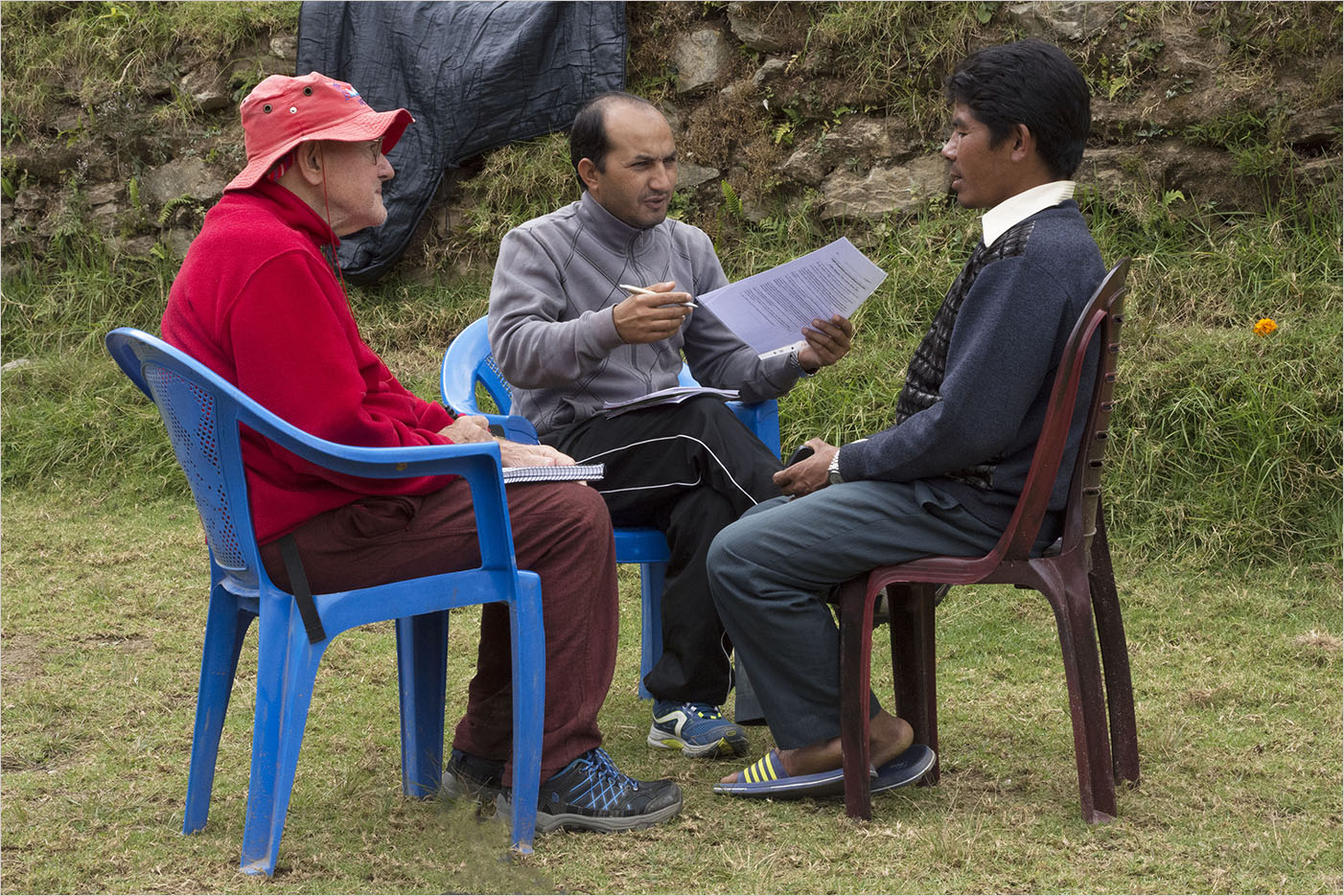Ganesh Bahadur Rai is 49 years old and married.
He is an English teacher at Basa Kali High School (in Yagachwai). He is also a farmer, passionate about education and cultural issues.
Ganesh’s house was completely destroyed and until now he has been living in a temporary shelter. But now the children are ill because of the cold. So he’s decided to move back into what’s left of his house.
When the first earthquake hit, on 26 April at ten to twelve, I was in my house watching television. Everything started to move. I went outside. The walls on the first floor of my house fell down. It’s a good thing it happened at midday, because people would have died in the evening or at night.
I immediately thought of my family in the fields. I feared a landslide, falling rocks. I cried. I thought of my father who was in hospital in Kathmandu. His house was broken. I was afraid of a crack in the ground, I was afraid of dying.
During this 52-second tremor, I felt three movements: one vertical, one horizontal and a third, circular, like a cyclone. The aftershocks continued for two hours.
Then I went looking for my family, then for a flat spot. Everyone (the neighbours) gathered round my house. They thought that if they were going to die, it would be better to be together.
At the end of the day I went back to my house (the first level) to look for food and a place to sleep. We shared all this with the other families nearby.
The first words we exchanged were to ask each other if we’d been scared, and then to find somewhere protected in case of a bigger tremor.
To explain this phenomenon, some people (around 10%) thought that Shiva was angry at the politicians who weren’t doing their job. But Ganesh knew, as did others (15%), that there was a scientific explanation: the tectonic plates were moving. The rest of the population thought nothing except to save their lives.
When evening came, we had to find a place to sleep. We found two tarpaulins, usually used for animals, and some plastic, and we sheltered under them. We ate biscuits and noodles and drank tea. Around 11 o’clock there was a rumour that we were all going to die at midnight. We were very scared until midnight. Then there were more little tremors for an hour and a half. We talked all night without sleeping.
When I think back to that moment, I say to myself that if there had been another tremor, it would not have been possible to survive, but that it was Shiva who decided. The image that stays in my head is the cyclonic movement that I felt at the same time as the sound of the landslides on the opposite bank of the Dudhkosi.
Since those tremors, I’ve been living without a roof over my head. I need to find somewhere safe from landslides and falling rocks, and I need solid ground. My house will have to be earthquake-proof to protect my children. New houses must be able to withstand tremors. But I want to keep my grandparents’ house, because it’s a symbol. I’m waiting for something scientific and reliable from the government and NGOs to rebuild, because Nepal is on a tectonic plate that is moving. I’m not waiting for the NR 200,000 promised by the government, because the Rapcha area is not a priority.
I don’t think there will be any more major earthquakes for another 80 years, because that’s how often these phenomena have occurred in Nepal since the eleventh century.
Interview with Ganesh Bahadur Rai
Marc Béchet – November 2015



